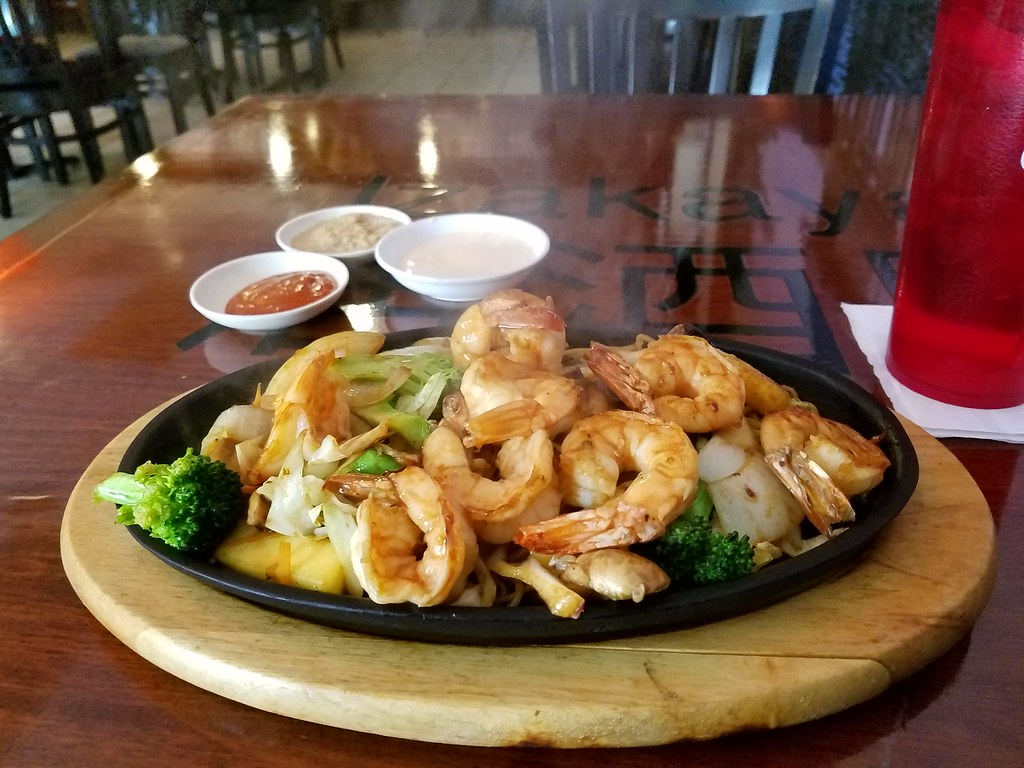
Do you appreciate the Japanese cuisine and enjoy eating at a hibachi restaurant? Maybe you love their hibachi shrimp and would like to prepare it at home for family or friends. Well, we have a delicious hibachi shrimp recipe here for you.
However, have you ever thought about where the tradition of hibachi cooking all began? You might just be surprised how the cooking came about. So continue reading to learn about the love combination of dining and entertainment that goes with it.
History of Hibachi Cooking
Maybe you heard about hibachi-style cooking but have never tried it. Well, it originated in Japan and, with years, evolved into the best cooking entertainment. The chefs use a flat-top grill made of cast iron or metal.
Sometimes the cooking vessel you find is a small and portable or permanent fixture in a countertop. With hibachi cooking, chefs combine the flavors of meat, veg, and rice. The seasoning used is vinegar, garlic, salt, soy sauce, and pepper.
Hibachi cooking goes by many names, but a familiar name is Teppanyaki, meaning grilling on an iron plate. The traditional hibachi comprises an open grate for preparing food, while the teppanyaki grill has a solid flat griddle. However, the cooking styles’ history is unclear as some claim it started 200 years ago in Japan.
Other people claim it only started in the mid-20th century. The first hibachi restaurant began in 1945 in Misono in Japan. The chefs combined food with entertainment, juggling the condiments or created flaming volcanos. These restaurants were more popular with foreign visitors than the residents from Japan.
Twenty years later, the cooking style became popular in the United States. However, one thing is sure everyone around the world loves hibachi food. The hibachi cooking style takes loads of training as chefs learn knife tricks and different cooking techniques to keep their guests entertained.
The Health Benefits of Shrimp
Now before we share our hibachi shrimp recipe, you can find out all the health benefits of enjoying this meal. Shrimp provides your body with healthy sources of vitamin D and protein to help promote weight loss. It has high zinc levels to increase your leptin levels and help regulate fat storage, overall energy, and appetite.
- The high levels of iodine can interact with the thyroid gland to speed up its activity to lose weight. Furthermore, it has:
- Anti-aging properties comprising high carotenoid levels (Astaxanthin) are antioxidants that help reduce aging in the skin.
- Helps prevent hair loss as zinc plays a crucial role in creating new cells from the skin to the hair.
- Shrimp contains a fibrinolytic enzyme that helps break up dangerous clots preventing cardiovascular disease.
- As it has different vitamins from magnesium, phosphorus, and calcium, it can improve your bone health.
- High iron levels are the main mineral that helps with hemoglobin and oxygen bonding to improve brain health.
- Lastly, it can help decrease menstrual pain. It has omega-3 fatty acids providing a balance out of the omega06 fatty acids that cause severe pains during menstruation.
Hibachi Shrimp Recipe
Nutrition Facts
Serving Size of 14 each percent daily value based on a 2000 calorie diet:
- Calories 200 % daily value from Fat 45 (22.5%)
- Cholesterol 165mg
- Carbohydrates 0 grams
- Net carbs 0 grams
- Fiber 1 gram 4%
- Sugar 1 gram
- Total Fat 5 grams
- Saturated Fat 1 grams
- Sodium 470mg 20%
- Protein 38 grams
Cook Time: 5 minutes
Total Time: 5 minutes
Ingredients
- 12 Ounces of Shrimp Peeled and Deveined ( with tails on or off)
- Two tablespoons canola or olive oil
- Two teaspoons of soy sauce
- One wedge lemon
White Sauce
- 1/4 cup Kewpie Mayo (or any other mayonnaise)
- One teaspoon sugar
- Two teaspoons rice vinegar
- One teaspoon sriracha
- ½ Teaspoon toasted sesame oil
Instructions
The Sauce:
Combine all ingredients in a bowl and adjust the taste according to your liking. Place in the refrigerator until later to use.
The Shrimp:
- Preheat a 12-inch skillet on medium-high heat with the oil until very hot.
- Start adding your shrimp in one layer and cook for up to two minutes until it starts to brown.
- Flip the shrimp and sprinkle with soy sauce and lemon juice.
Continue cooking until browned on both sides for about one or two minutes more.
You can serve the shrimp with veggies or rice drizzled with the white sauce you placed in the fridge.
Side Notes:
You can use the same recipe with chicken and veggies. An alternative to cooking the hibachi shrimp in a stainless steel skillet can also use a cast-iron one.
What hibachi shrimp recipes have you tried making? Feel free to share your recipes here.